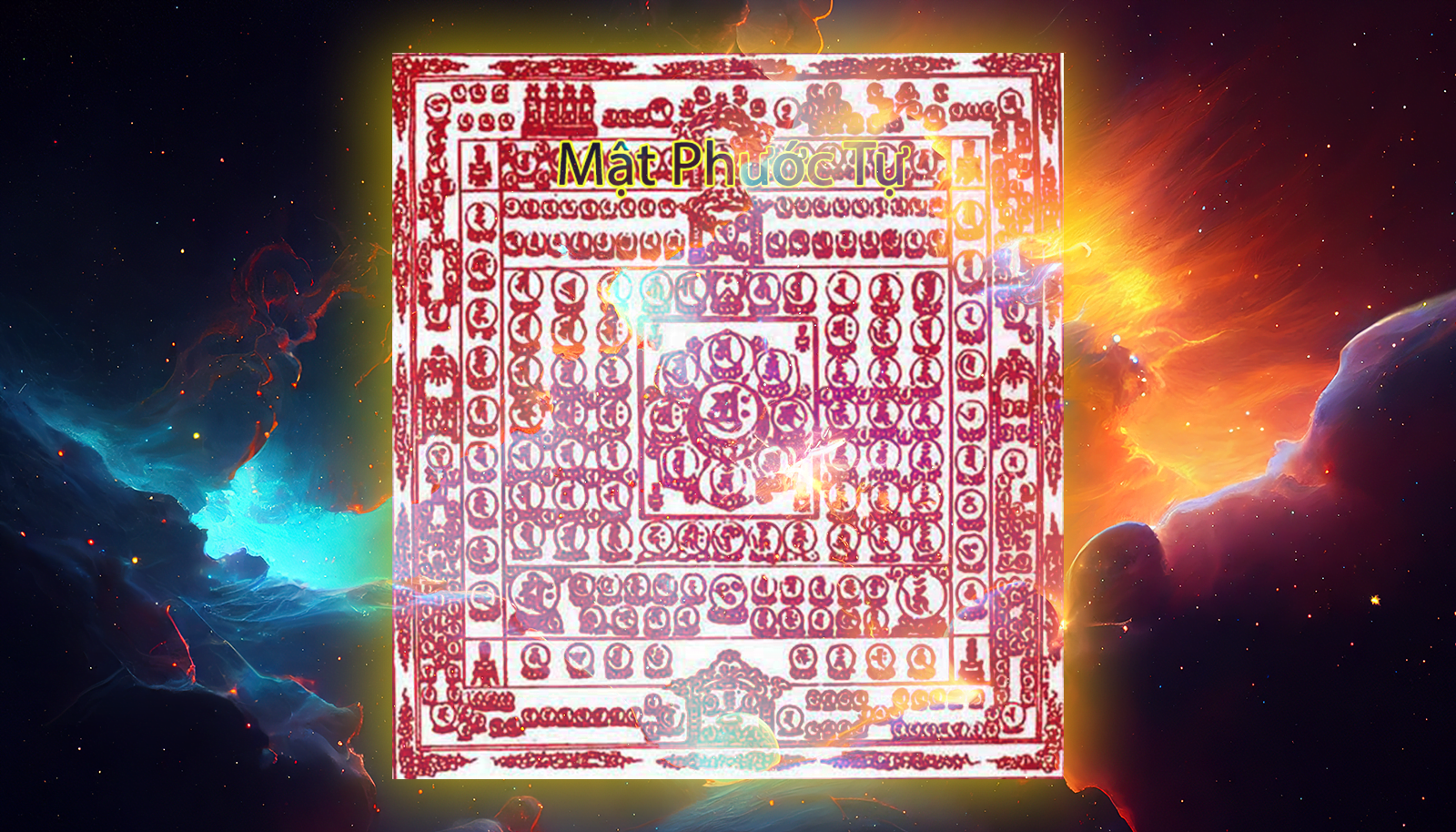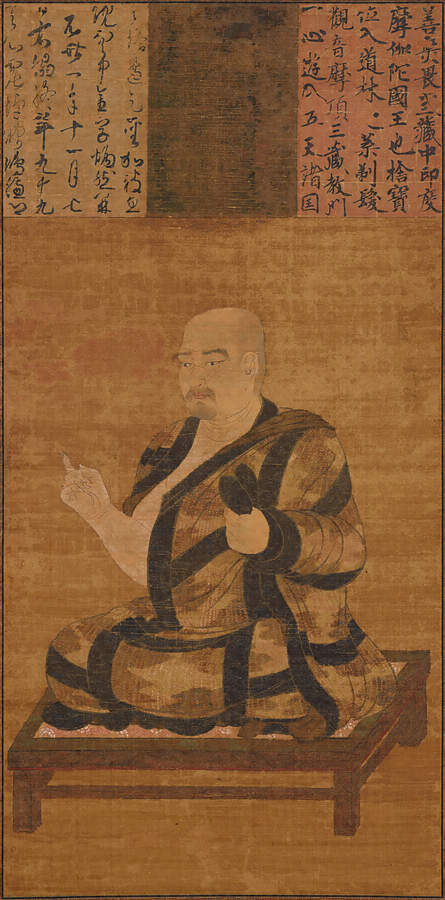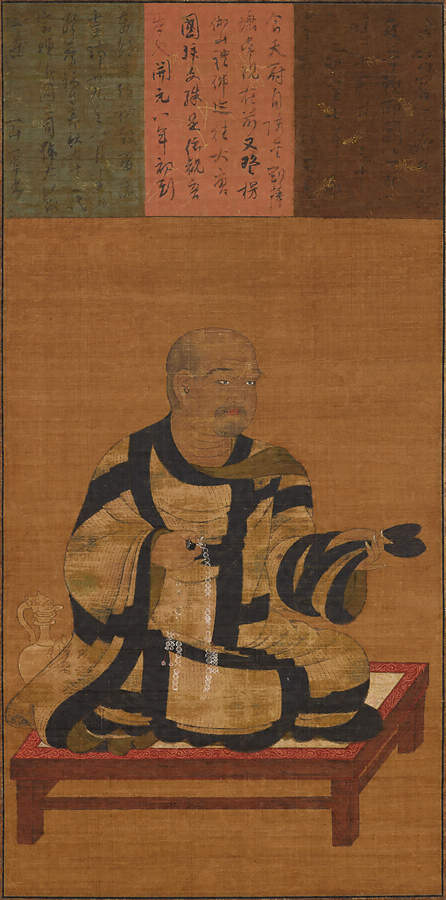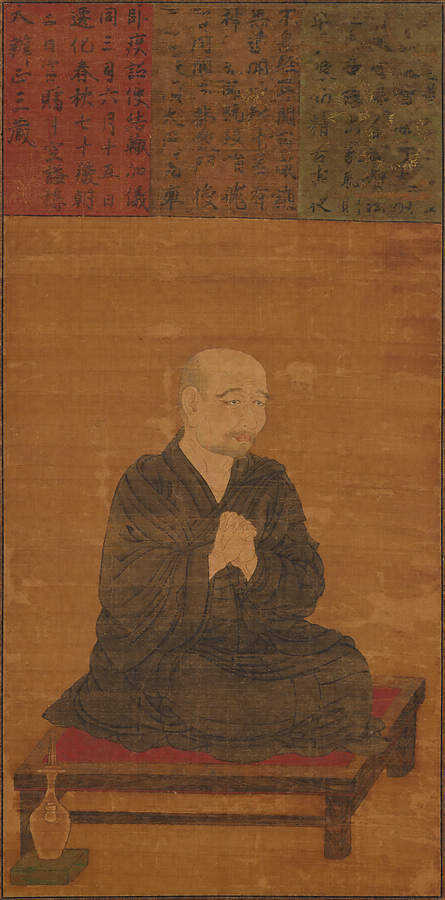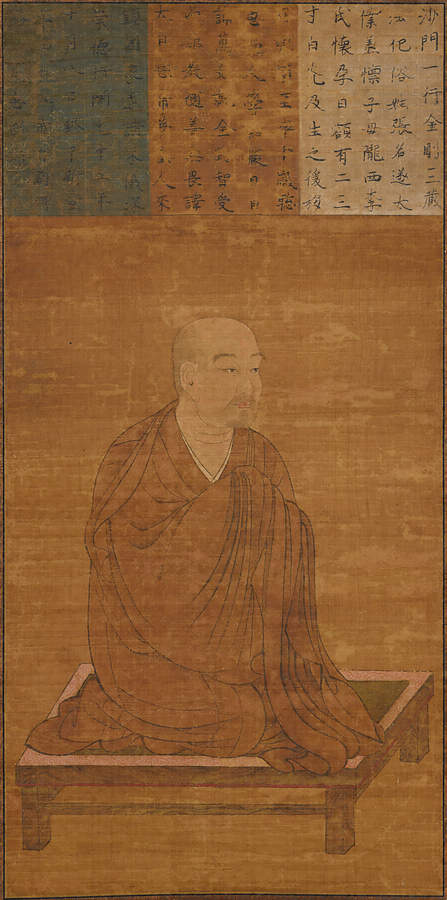The Sutras belonging to the various tantric Buddhist sects were translated into Chinese in the early fourth century A.D. Srimitra, habitants of Pai Country (Kuccha, a white skin tribe), had translated a few scriptures on charms symbols, mystic sentences, some mantras, and verses praising the Deities and saints. In reality they could not be considered as the representation of a high aspiration.
The pure Secret Buddhism sect began with the following masters in tantric Buddhism who came to China between 713-765 AD during the Tang Dynasty.
A. SUBHAKARASIMHA (637-735):
He was once the king of Orissa, however he fled the throne and became a monk at Nalanda University. He studied Secret Doctrine with Nagabodhi, the 4th patriarch. He often traveled to the southern regions of India where Nagarjuna’s Doctrine of Emptiness was most popular. Subhakarasima was proficient in the Emptiness doctrine and the Doctrine of “The Unique Dharma Realm” as well as having a profound understanding of yoga meditation techniques, the Dharanis and Mudras. He traveled to Kasmir and Tibet and arrived in Ch’an-An in 716 AD, the fourth year of the Tang Dynasty. The Emperor Xuan Zong (685-762AD) received him with great respect and made him “teacher of the state”. In 717 AD, he translated the Sutra of the Vajarasekhara Crown. He died at the age of ninety-nine. At the same time, Wu’ Xi’ng, a Chinese scholar, traveled to India and met Yi Jing (another Chinese scholar) in Nalanda. Wu’ Xi’ng had collected many Sanskrit scriptures, but died on his way home. The documents he gathered were sent to the monastery of Avatamsaka in Ch’an-An. Having heard about the scriptures, Subhakarasimha had selected some important ones, and started translating the Mahavairocana Sutra and other scriptures in 725 and 726 AD with the help of a Chinese disciple.
At the time, whenever Subhakarasimha initiated the ceremony to preach the Dharma, he had the spiritual powers from the Buddhas to perform many miracles and converted many people to Buddhism.
B. VAJRABODHI (663-723AD):
Vajrabodhi was from southern India. He too came from a princely family. He received religious training at Nalanda. At the age of 15, he went to West India to study the treatise on human’s intelligence for four years with Dharmakirti, and went back to Nalanda to receive the great precepts. He diligently studied the laws (Vinaya) and essay on the Middle Path (Madhayamira) for six years with Santabodi. For the next three years he studied the doctrine of forms and researched on the Yogachna essay of Asangha, on Intellectualism (Viynaptimara) of Vasubandhu, and the debate on the middle path essay of An Hui, together with Jinadhadra (Madhyantavibhaya of Sthimati Bodhisattva) in the city of Kapilavastu in North India. Seven years later.he researched on the Vajrasekhara Sutra and other secret scriptures from Nagabodhi in South India.
In 720 AD., Vajrabodhi arrived by way of the South Sea with Amogha and his disciples to Ch’an-An, the capital of Tang Dynasty now called Xi ‘An. Obeying imperial decree, he had altars put up in two temples for the celebration of initiation ceremonies. He translated many secret scriptures, such as Vajrasekhara Sutra and others. His scriptures contained many terms from the Doctrine of Form. Every time he set up the altars and preached the Dharma, miraculous things happened. He could cause rain to fall, give orders to Gods and Demons, and eliminate disasters. Such performances were said to be his normal routine.
C. Amoghavajra (705-774 AD):
Amoghavajra, from northern India, was an outstanding disciple of Vajrabodhi. He was a novice at the age of 15 when he came to Canton, and with his teacher, he traveled to Luo Yang. He received the Great Precepts at the age of 20. In twelve years he developed a complete understanding of the doctrine of form, both in theory and in reality. After finishing his study with Vajrabodhi, he continued to learn about the Garbhakosa Manda with Subhakarasimha.
After the death of Vajrabodhi, he left China and returned to Ceylon, India where he met the renowned Nagabodhi who initiated him into the secret doctrine. He looked for more Sutras and received more scriptures on Yoga. He often consulted with talented scholars in Secret doctrine in India. He went with his students, altogether 37 people, to see the Dharma Master Samantabhadra and research the Doctrine of Vayra-Sekhara-Yoga and Mahavairocana-Gharbhakusa. He then returned to Ch’an-An, bringing with him a wealth of Sutras.
Amoghavajra transmitted the doctrine to five disciples: Han guang, Hui Lang, Tan Zhen, Jue Chao and Hui Guo.Hui lang transmitted the Dharma ato Qian Zhu, Zhu Chuan, De Mei, Hui Jin and Zhao Zheng, a layman. Hui guo transmitted to Yi Zao and Kukai from Japan. The latter went back to Japan and successfully spread the religion.
D. I-Xing (683-727):
I-Xing or Ichigyo was the student of Subhakarasimha. Ichigyo was proficient in the Three Treatises, meditation, Tien Tai doctrine, and the science of horoscope calendar. He once helped Subhakarasimha translate the “Mahavairocana Sutra”. From listening to the explanations of his teacher, he was able to write explanations about this Sutra, which was called Mahavairocana Sutra Expose. It was composed of twenty books and was considered the essential sacred books of Secret Buddhism. It contained many teachings of the Tien Tai sect, as he was an erudite scholar on TTien Tai’s philosophy. The text was transmitted without revision until Zhi Ya’n, who was a student of both Subharkarasimha and Wen Gu Vajrabodhi, revised it and named it the “Meanings Of Mahavairocana Sutra”.
The eastern Secret Buddhism continued to use the initial unedited scriptures while the T’ien-T’ai sect used the edited one. Ichigyo studied with both Subhakarasimha and Vajrabodhi. Both teachers transmitted the doctrine and rituals of Vajradhatu and Garbhakosa to him. Some said that Ichigyo considered the Vajradhatu doctrine more important.
Ighigyo was a scientist with superior wisdom. He was the personal teacher for Emperor De Zong. The following diagram shows the transmission lineage in China:
Mahavairocana
NagaRjuna Bodhisattva
Nagabodhi Bodhisattva
1. Subhakarasimha (637-735)
2. I-Xing (Ichigyo) 2. Amoghavajra
3.Yi Lin 3. HuyenChieu
4. Shun Xiao 4. Hui Kuo
5. Dengyodaishi 5. Kukai (kobodaishi)
Vajaradhatu
1. Vajarabodhi (663-723)
2. Amoghavajra 2. Ichigyo (I-Xing)
3. Yi Zao 3. Hui Kuo
4. Yi Zheng 4. Dengyodaishi
5. Ci Jie Ta da shi 5. Hui Ze
6. Yoka Daishi
Related Post
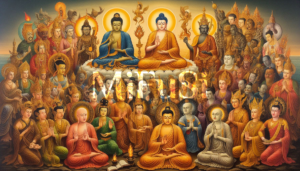
Atheism vs Blind Believer
Atheism vs Blind Believer The issue of Faith in major religions The concept of faith varies significantly across major religions....
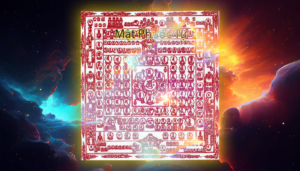
Chapter VI: I – Dharani – Mudra – Yantra – Mandala And Magic Circles
I. SIX LETTERS DHARANI KING SUTRA Shi Yi recorded in the Liang Dynasty Thich Vien Duc translation from Chinese to...
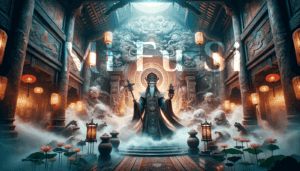
ST TRAN’S EXORCISM AND COMMENTARY
Saint Trần exorcises evil spirits. Introduction: In 1920, the French Society for Psychic Research sent two representatives, Mr. Camille Flammarion...
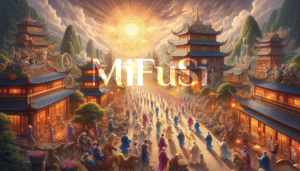
The supernatural events at Long Binh Dien-Mytho
The supernatural events at Long Binh Dien-Mytho LONG BÌNH ĐIỀN (Thần bí và Đạo - Cư sĩ Triệu Phước) translated...
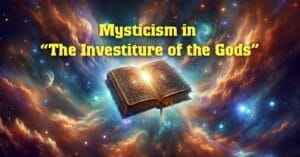
JIANG ZIYA’S MARRIAGE
After showing respect to his master and bidding farewell to his friends, Jiang Ziya departed from the mountain and journeyed...
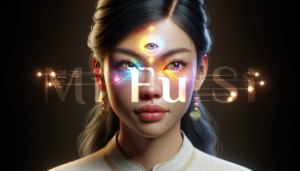
The Third Eye
The Third Eye (CON MẮT THỨ BA by Thiết Đầu on Thu Apr 30, 2009 2:24 pm) Edited by Xiaobaiyun...
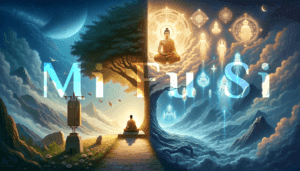
SELF-RELIANCE VS. DIVINE HELP
SELF-RELIANCE VS. DIVINE HELP by TTC on 04 May 2009, 03:18, translated by Horangi Question: What are the necessary steps...
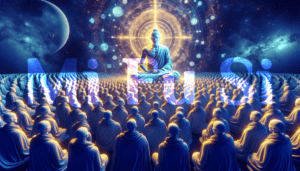
MEET THE “LIVING BUDDHA”
MEET THE "LIVING BUDDHA" (Gặp Phật Tại Thế by Anbình on 18 Feb 2014 - translated by Silly92, edited by...
